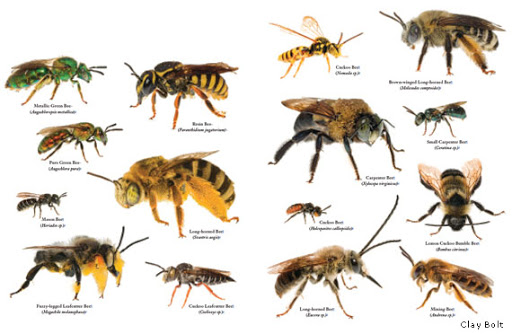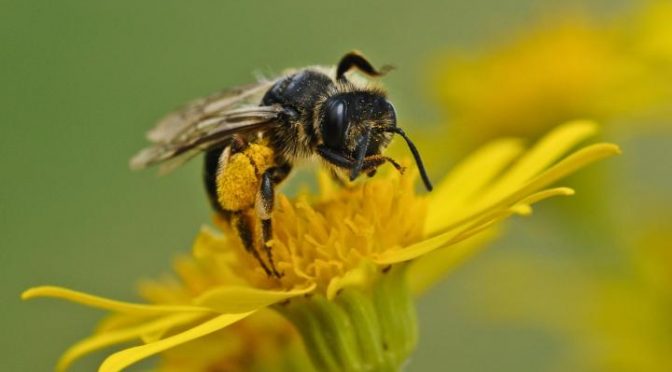If you haven’t figured it out by the title, we will be talking about native bees and how they are being affected by pollutants of all sorts. As many of you have already heard, bees are having a particularly hard time as of late when it comes to surviving and reproducing. This is a problem that can be seen throughout the United States, but today we will be talking about native bee populations pertaining to Wisconsin. Native bees play an essential role in Wisconsin’s agricultural community and without them could really hurt the crop output with certain crops that require fertilization by the transferring of pollen from one plant to another. As a matter of fact, 70% of angiosperm plants rely on insect pollination. The word angiosperm refers to plants that produce a flower; which includes, all fruit’s, rice, wheat, acorns, beans, and corn. Some of those plants like corn, wheat, and soybeans can either be self-pollinated or be helped by the wind in fertilization. When it comes to Wisconsin’s Orchardist’s and their crops of apples, cranberries, and cherries etc. many of them should be worried. When it comes to ecosystems, many of them rely on the native bee populations because their larvae and the plants they pollinate provide food for a variety of wildlife.

Native bee populations have been plummeting for a multitude of reasons. For instance, invasive species tend to battle with the native bee population for certain food sources and in most cases native bee population are not enough to fight off these invaders ultimately leading them to getting kicked out of an area. In addition to that, pesticides have always been a problem for native bee populations. Many bee populations tend to live near crops because they are a steady source of food which make them vulnerable to these very pesticides. Last of all, climate change has caused for a lot of habitat loss that many native bee populations tend to rely on for survival, for reproductive purposes, and in some cases food. Without these specific habitats many native bee populations have vanished. If we do not do something about our actions when it comes to climate change and our pesticide use, we will be forced to self-pollinate some of our crops and some of our current ecosystems may collapse. We need to change our ways.


I wonder if the late winters/late summers we’ve been having in Wisconsin has been messing with the bee population. The warm to cold to warm to cold might be disrupting the bee’s usual pattern for knowing when it’s spring and climate change could be affecting the bee population heavily.
Luke, I feel like the constant warm to cold cycle is having more of an impact than the late summers and winters. False spring is a common term in Wisconsin for quite some time so I’m sure it affects more than just our moods when the illusion of spring disappears.
I found this blog to be very informative for I hear a lot of people talking about the bee population problem. I was able to see the number of different types of bees, read about what bees also pollinate besides just flowers, and the impact of the decreasing bee population has on the ecosystem. Looking at your other blog too, i felt this was a great blog to create as I look forward to your next topic!
I always heard “save the bees” but I never truly understood why. This was very helpful!
This is a very important topic to be discussing! I feel like many people shrug their shoulders when someone brings up “saving the bees” because they lack the education of why these bees are so important to the ecosystem and how they benefit humans. Keep spreading the word about bees!!
honey-producing bees. healthy and quality honey
bene, continua a lavorare
bene grazie
What is a link shortener?
URL shortener is a tool used to convert long and complex links into short and simple links. These tools usually take a long URL and turn it into a shorter URL that is easier to remember and share. کوتاه کننده لینک اختصاصی When someone clicks on the short link, it will automatically redirect to the original URL. Link shortener applications:
Easier to share: Shorter links are easier to share, especially in text messages and social networks.
Click tracking: Many link shortening services provide tracking of clicks and other statistics.
Beautifying links: Shorter, cleaner links look better and are more visually appealing.
Manage links: Some tools allow you to manage and organize shortened links.